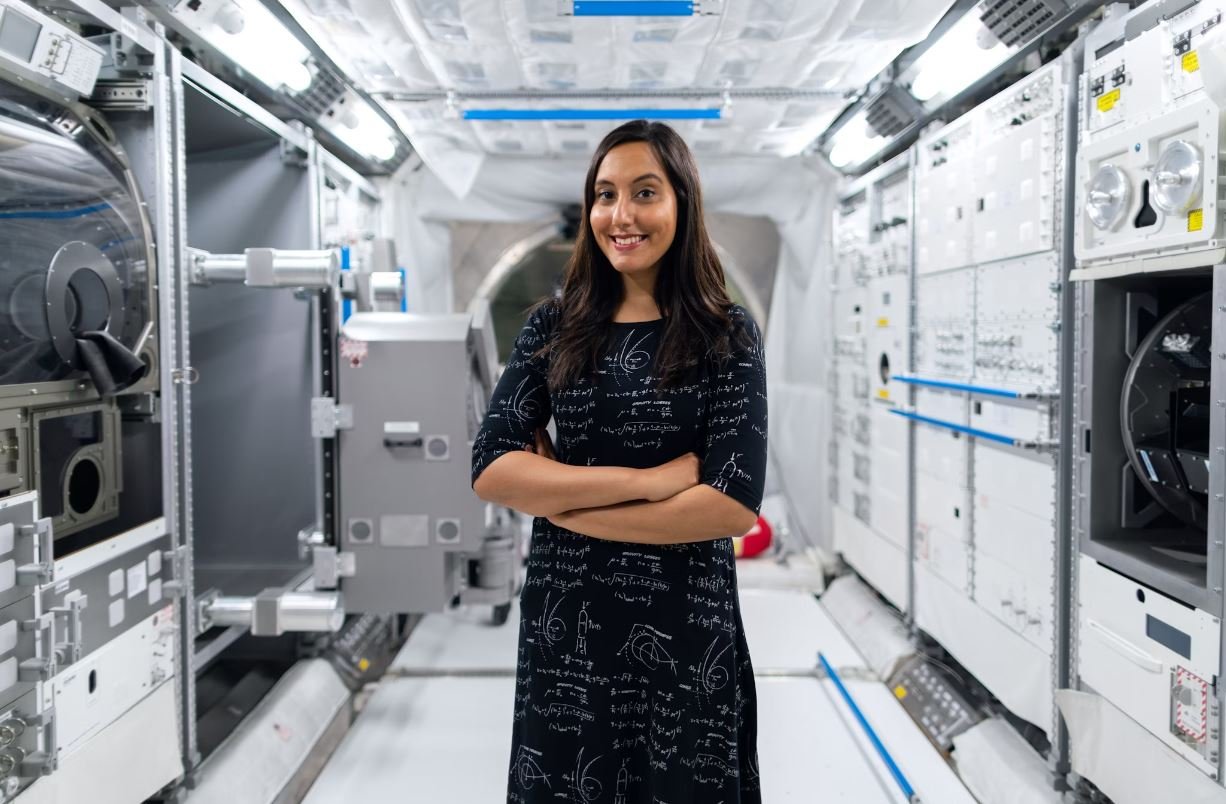Narrow AI vs General AI
Artificial Intelligence (AI) has become an integral part of our daily lives, revolutionizing industries and enhancing human capabilities. But not all AI is created equal. Two main types of AI, Narrow AI and General AI, differ in their scope and abilities. Understanding the distinctions between these two forms of AI is crucial for unlocking the full potential of artificial intelligence.
Key Takeaways:
- Narrow AI is designed for specific tasks, while General AI aims to simulate human intelligence across a wide range of activities.
- Narrow AI performs well in specialized domains, whereas General AI strives for versatility and adaptability.
- Narrow AI typically relies on large amounts of data, while General AI exhibits more robust reasoning capabilities.
Narrow AI, also known as weak AI, is designed to perform specific tasks proficiently within a limited domain. It excels at executing predefined functions and has narrow skill sets tailored for those specific tasks. Narrow AI systems, such as voice assistants and recommendation algorithms, are increasingly prevalent in today’s technology landscape.
However, despite their expertise, narrow AI systems lack flexibility and cannot generalize beyond their designed functions.
The main strength of narrow AI lies in its ability to solve well-defined problems efficiently and accurately. These specialized AI systems are purpose-built for tasks such as image and speech recognition, natural language processing, and fraud detection. By leveraging large data sets and employing machine learning techniques, narrow AI systems can make accurate predictions and recommendations in their respective fields.
| Narrow AI | General AI |
|---|---|
| Task-specific | Versatile |
| Focused on efficiency and accuracy | Achieves complex reasoning |
| Uses structured data | Capable of learning from unstructured data |
General AI, also known as strong AI or artificial general intelligence (AGI), is the pursuit of creating AI systems capable of reasoning, learning, and performing tasks across various domains in a manner similar to human intellect. The ultimate goal of General AI is to mimic human cognitive abilities and demonstrate the same level of adaptability and problem-solving skills.
While narrow AI is highly specialized, General AI aims to encompass multiple domains and exhibit a broad range of cognitive capabilities.
Developing General AI is an immense challenge due to the complexity of human cognition and the vast array of knowledge required to emulate such abilities. Achieving General AI requires models that can understand and reason with complex concepts, learn from limited data, and adapt to new situations. This form of AI would have the potential to understand and reason about the world as well as humans do.
Narrow AI vs General AI: A Comparison
To help visualize the differences between Narrow AI and General AI, let’s explore some of their key characteristics:
Narrow AI
- Designed for specific tasks and functions.
- Relies on large data sets and structured data.
- Performs well in well-defined domains, such as object recognition or voice translation.
- Not capable of generalizing beyond their programmed functions.
General AI
- Aims to simulate human intelligence across multiple domains.
- Capable of reasoning, learning, and adapting to new situations.
- Can understand and process unstructured data, including human language and visual information.
- Has the potential to perform a wide range of complex tasks without human intervention.
| Narrow AI | General AI |
|---|---|
| Designed for specific tasks | Simulates human intelligence across domains |
| Relies on structured data | Processes unstructured data |
| Not capable of reasoning | Reasons and learns from limited data |
Experts have been making significant progress in developing Narrow AI systems, with applications ranging from healthcare to finance. However, we have yet to achieve a fully functional General AI. While General AI remains a long-term goal, advancements in narrow AI continue to reshape industries and improve our lives, offering immense value and potential for innovation.
As AI technology evolves, the distinction between Narrow AI and General AI will become increasingly significant, paving the way for new possibilities and challenges in the field of artificial intelligence.

Common Misconceptions
Misconception 1: Narrow AI is the same as General AI
There is often confusion between Narrow AI and General AI, but they are not the same thing. Narrow AI refers to artificial intelligence systems that are designed to perform specific tasks or solve specific problems, while General AI is a system that can understand, learn, and perform any intellectual task that a human being can do. Some misconceptions about this include:
- Narrow AI can easily transition into General AI.
- All AI applications are automatically classified as General AI.
- Narrow AI is just as capable as General AI.
Misconception 2: Narrow AI will inevitably lead to General AI
Another common misconception is that the development of Narrow AI will inevitably lead to the creation of General AI. While the progression from Narrow AI to General AI is a goal for many researchers, it is not yet clear if this progression is possible or how long it may take. Some misconceptions about this include:
- All Narrow AI systems are stepping stones towards General AI.
- All AI technologies will naturally evolve into General AI over time.
- Once Narrow AI is fully developed, General AI will automatically emerge.
Misconception 3: General AI is just around the corner
There is a common belief that General AI is only a few technological breakthroughs away and will become a reality in the near future. However, this is a misconception as General AI is an incredibly complex problem that has not been solved yet. Some misconceptions about this include:
- General AI will be achieved within the next decade.
- There are no major obstacles standing in the way of General AI development.
- General AI will surpass human intelligence as soon as it is developed.
Misconception 4: Narrow AI is not as powerful as human intelligence
Some people underestimate the capabilities of Narrow AI and believe that it is not as powerful as human intelligence. However, Narrow AI systems can excel in specific tasks and outperform humans in certain areas. Some misconceptions about this include:
- Narrow AI is only capable of performing simple and repetitive tasks.
- Human intelligence will always be superior to Narrow AI systems.
- Any task that Narrow AI can perform, humans can perform better.
Misconception 5: AI will inevitably replace human jobs
There is a fear that AI will lead to mass unemployment as it replaces human jobs. While AI can automate certain tasks, it is important to note that it also creates new job opportunities. Some misconceptions about this include:
- AI will render humans obsolete in the workforce.
- All jobs will eventually be fully automated by AI.
- AI advancements will lead to a decrease in job availability.

Narrow AI Applications
Narrow AI refers to artificial intelligence that is designed to perform a specific task or set of tasks with high precision and accuracy. The following table showcases various applications of narrow AI in different industries:
| Industry | Application | Description |
|---|---|---|
| Healthcare | Medical diagnosis | Narrow AI algorithms analyze medical images and data to assist doctors in accurately diagnosing diseases. |
| Finance | Fraud detection | Narrow AI systems monitor financial transactions and patterns to identify potential fraudulent activities. |
| Automotive | Autonomous driving | Narrow AI is used in self-driving cars to perceive the environment, make decisions, and navigate safely. |
| Retail | Recommendation engines | Narrow AI algorithms analyze customer preferences to provide personalized product recommendations. |
| Education | Intelligent tutoring | Narrow AI systems provide individualized instruction and feedback to students based on their learning needs. |
General AI Capabilities
General AI, on the other hand, refers to artificial intelligence that possesses human-like intelligence and can perform any intellectual task that a human being can do. The following table highlights some of the capabilities of a hypothetical general AI:
| Capability | Description |
|---|---|
| Natural language understanding | A general AI can comprehend and interpret human language with contextual understanding. |
| Problem-solving | A general AI can identify, analyze, and solve complex problems more efficiently than humans. |
| Creative thinking | A general AI can generate new ideas, create works of art, compose music, and engage in other creative activities. |
| Emotional intelligence | A general AI can understand and respond to human emotions, developing empathy and forming social connections. |
| Adaptability | A general AI can learn and adapt to new situations and environments, continuously improving its performance. |
Narrow AI Performance
While narrow AI demonstrates exceptional capabilities in specific tasks, its performance may vary depending on the domain and dataset size. The table below compares the performance metrics of various narrow AI models:
| Model | Accuracy | Processing Speed | Data Requirements |
|---|---|---|---|
| Image Classification AI | 96% | 50 milliseconds | Large labeled dataset |
| Speech Recognition AI | 92% | 100 milliseconds | Extensive audio recordings |
| Language Translation AI | 87% | 1 second | Parallel corpora of translated texts |
| Chatbot AI | 84% | Negligible latency | Large conversational dataset |
| Facial Recognition AI | 99% | 200 milliseconds | Extensive labeled facial datasets |
General AI Challenges
Developing a general AI that can match or surpass human intelligence presents numerous challenges. The table below outlines some key challenges in achieving general AI:
| Challenge | Description |
|---|---|
| Computational Power | General AI requires immense computational resources to process vast amounts of data and perform complex computations. |
| Ethics and Values | Enabling a general AI with human-level intelligence raises ethical dilemmas regarding decision-making, bias, and moral responsibility. |
| Safety and Security | Building safeguards to prevent a general AI from being manipulated, hacked, or causing intentional harm is crucial. |
| Learning from Limited Data | General AI should be capable of learning efficiently from smaller, less diverse datasets, similar to humans’ ability to generalize. |
| Human-like Understanding | Developing language models that truly understand context, subtleties, and nuances remains an ongoing challenge for general AI. |
Narrow AI vs. General AI Adoption
Currently, narrow AI systems are more prevalent and adopted extensively across various industries, while general AI remains a concept in development. The table below showcases the adoption rates of narrow AI and general AI:
| Industry | Narrow AI Adoption | General AI Adoption |
|---|---|---|
| Healthcare | High | Low |
| Finance | High | Low |
| Manufacturing | Medium | Low |
| Transportation | Medium | Low |
| Retail | High | Low |
Public Perception of Narrow AI and General AI
The public perception of AI greatly influences its acceptance and integration into society. The table below presents the general public’s perception of narrow AI and general AI:
| Perception | Narrow AI | General AI |
|---|---|---|
| Fearful | Low | High |
| Excited | High | Medium |
| Intrigued | Medium | High |
| Cautious | Medium | High |
| Skeptical | Low | Medium |
Narrow AI Regulation
Proper regulation and governance are crucial to ensure the ethical and responsible use of narrow AI systems. The table below highlights essential aspects of narrow AI regulation:
| Aspect | Description |
|---|---|
| Transparency | Narrow AI systems should provide clear explanations of their decision-making process and the data they use. |
| Privacy | Regulations must protect individuals’ data privacy and establish guidelines for secure data handling and storage. |
| Accountability | Organizations using narrow AI must be accountable for the actions and decisions made by the AI systems they deploy. |
| Algorithmic Bias | Regulations should address potential biases in narrow AI algorithms that could discriminate against certain groups. |
| Training and Validation | Standards and benchmarking should be established to ensure the accuracy and fairness of narrow AI models. |
The Path Forward
Narrow AI has made significant advancements in various domains, providing practical solutions to complex problems. However, achieving general AI poses substantial challenges, both technically and ethically. As research and development in AI continue, it is crucial to strike a balance between harnessing the power of advanced AI systems while addressing the concerns surrounding its widespread adoption. Ultimately, the future of AI lies in the responsible and thoughtfully guided progression towards general AI, keeping in mind the potential benefits, risks, and ethical implications.
Frequently Asked Questions
What is Narrow AI?
Narrow AI, also known as weak AI, refers to AI systems that are designed to perform specific tasks or functions with high accuracy within a limited domain. These AI systems are trained to perform well on a specific task, such as image recognition or language processing, but they lack general intelligence and cannot perform tasks outside of their specific domain.
What is General AI?
General AI, also known as strong AI or artificial general intelligence (AGI), refers to AI systems that possess the ability to understand, learn, and apply knowledge across multiple domains similar to human intelligence. General AI aims to mimic human-level intelligence and can perform a wide range of tasks that require reasoning, abstract thinking, and problem-solving abilities.
What are the key differences between Narrow AI and General AI?
The main differences between Narrow AI and General AI include:
- Narrow AI is designed for specific tasks, while General AI aims to have broad task capabilities.
- Narrow AI operates within a limited domain, whereas General AI can apply knowledge across multiple domains.
- Narrow AI lacks reasoning and decision-making abilities beyond its specific function, whereas General AI strives to achieve human-like cognitive abilities.
- Narrow AI systems are currently widely used in various industries, while General AI is still a theoretical concept and does not exist at the same level of sophistication.
What are some examples of Narrow AI?
Examples of Narrow AI include voice assistants like Siri and Alexa, autonomous vehicles, spam filters, recommendation systems, and chatbots. These AI systems are built to perform well in their respective tasks but do not possess the ability to perform tasks outside of their domain.
What are the potential benefits of Narrow AI?
Narrow AI has several potential benefits, including:
- Improved efficiency and accuracy in completing specific tasks
- Automation of repetitive or dangerous jobs, reducing human labor needs
- Enhanced decision-making through data analysis and pattern recognition
- Customized user experiences and personalized recommendations
What are the challenges in achieving General AI?
Achieving General AI poses several challenges, including:
- Overcoming the limitations of narrow specialization and developing systems with cross-domain capabilities
- Ensuring ethical and responsible use of AI technology
- Addressing the potential risks of superintelligent AI surpassing human control
- Understanding human cognition and replicating it in AI systems
- Building robust and adaptable AI systems that can handle uncertainty and unforeseen scenarios
Is General AI possible?
The concept of General AI is theoretically possible, and many researchers and experts believe it can be achieved in the future. However, the timeline and feasibility of reaching General AI are still highly debated. Developing an AI system that possesses human-like general intelligence remains a significant scientific and engineering challenge.
What are some current applications of Narrow AI?
Narrow AI is currently used in various applications, such as:
- Image and speech recognition
- Natural language processing and machine translation
- Fraud detection and cybersecurity
- Medical diagnosis and healthcare
- Financial and stock market analysis
How does Narrow AI impact society?
Narrow AI has both positive and negative impacts on society. On one hand, it can improve efficiency, automate tasks, and enhance decision-making. On the other hand, it may lead to job displacement, privacy concerns, and ethical dilemmas. It is important to carefully consider the potential societal implications and ensure responsible deployment of Narrow AI.




